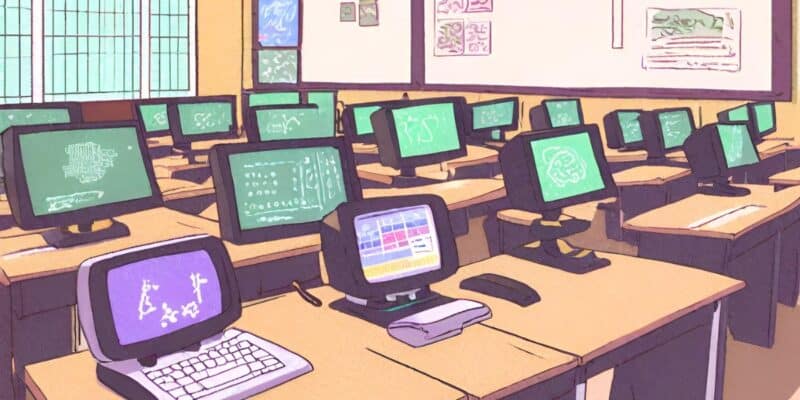A Notre Dame Senior’s Perspective on AI in the Classroom

*Note: The above illustration was generated by artificial intelligence in the design tool Canva from the prompt “a college classroom that uses computers to incorporate artificial intelligence into assignments.”
Winter break of last year was the first time I really heard about any generative AI. Now I find myself teaching my parents how to look for signs of a generated image and taking an entire class dedicated to generative AI. What could have seemed like a passing fad has become entrenched in both professional and cultural conversations.
At this moment, as a college student trying to navigate the messy, fast-developing, and varied world of generative AI, I feel more confused than ever. I think most of us can share that feeling. There’s no roadmap on how to use AI in education, and there aren’t the typical years of proof to show something works. However, this promising new tool is sitting in front of us, and we would be foolish to not use it or talk about it.
I’ve been fortunate to work and speak with various faculty on issues regarding AI and its place in education generally, and specifically here at Notre Dame. These conversations and projects helped me move past the idea that generative AI’s only use in school is to write an essay for me. I’ve used it to help me understand sample code I was viewing, rather than mindlessly trying to copy what I was trying to learn from. I’ve also used it to help prepare for a debate, practicing making counterarguments to the points it came up with.
Had I used generative AI for these tasks last year, I would have felt conflicted over the academic integrity issues that this would raise. This shift isn’t life-changing, but having had conversations about what AI use can look like in the classroom helped me develop a deeper understanding of both the material in class and the applications of AI in classrooms. Having witnessed this personal shift in myself, I have realized the importance of promoting open conversations on AI in classrooms and academia more generally.
This isn’t to say that generative AI is perfect or will fix education for all. In fact, sometimes ChatGPT can’t even do simple math, and it is frequently thrown off by the equal sign. AI alone cannot teach something; there needs to be critical interaction with the responses we are given. However, this is something that is true of any form of education. I could sit in a lecture for hours a week, but if I don’t do the homework or critically engage with the material, I don’t expect to learn anything.
The same can be said about AI. There will be no perfect time to learn about AI, as it will likely never be a finished product with an easy decision to use. Accompanying students in their exploration and understanding is a new and daunting task, but something that is essential for an improved classroom environment.
The onus of exploring AI can’t be put on students alone, as students typically do not feel empowered to start these conversations. One of the most helpful things professors have done is talk in-depth about what AI can look like in their classroom. This means going past a monotoned explanation of the AI section of the syllabus (which is typically too vague and consists of asking for citation and caution when using AI) and engaging with students and setting clear boundaries. Clearly demonstrating what acceptable AI use in the class looks like is helpful, and giving students space and dedicated time to explore AI in the classroom is essential. This allows students to critically engage with AI themselves, form their own opinions, and fully understand the limits and allowances of AI in the classroom.
The answer cannot be to shun away AI, but to work towards an understanding both personally and professionally of what AI use can look like in the Notre Dame classroom.
Sarah Ochocki is a senior at Notre Dame majoring in neuroscience and behavior as well as education, schooling, and society.